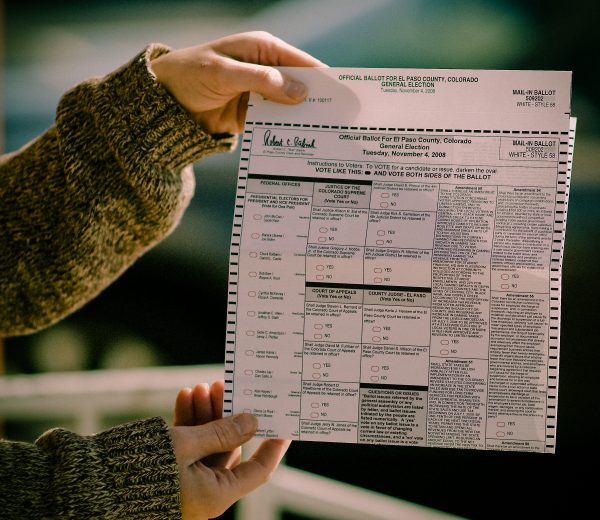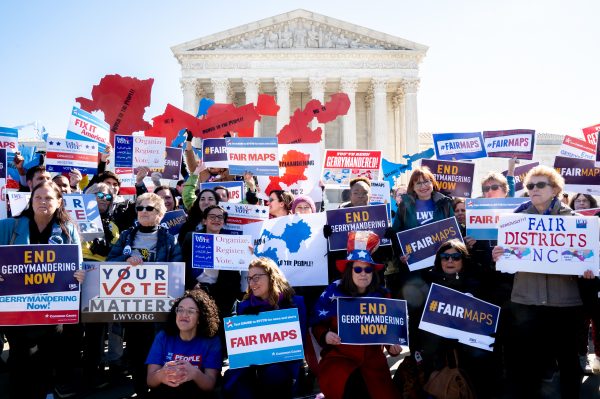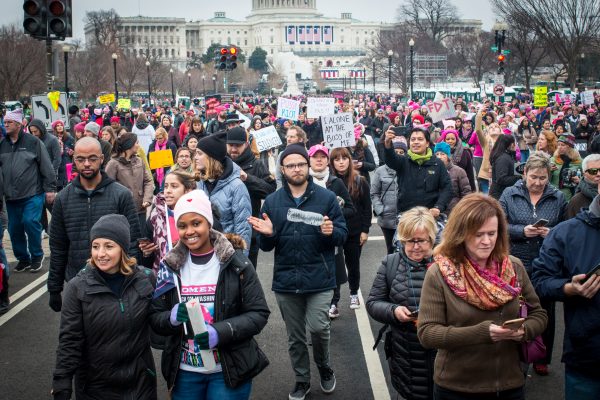Election Day is right around the corner. In this #TSPClassic Collection, we review several oldies-but-goodies about voting and elections. These include pieces on historical and contemporary patterns in voter turnout, and the evolution of voter laws in the USA.. We also take stock of how political participation and democracy itself goes beyond just voting on Election Day.
Who Votes and Why?

Who people vote for, and why they vote for them, is an important element of studying elections and political participation in social science, That doesn’t mean you can convince everybody on the other side of the political aisle to vote for your preferred candidate. This Sociological Images post considers the growing field of cognitive sociology to explain why voter choice and voter preferences are complex and hard to change.
A common question in American politics is whether people will vote: what motivates some people to vote regularly in national and local elections versus others who don’t really vote at all? This Soc Images post describes the answers people give when asked why they didn’t vote? This can range from personal attitudes such as opinions about the candidates on the ticket and or a general disinterest in politics. A lack of voter turnout can also be explained by barriers in the process including registering to vote, finding time to vote, and even dealing with bad weather on Election Day. Importantly, voter patterns differ by demographics. As described by this Soc Images post and this TSP Special, there are clear differences in voter registration and turnout among people of varying races, education, gender, and other differing backgrounds. This research question has been studied at length for decades, and considering such findings over time reveals important trends. This post from Sociological images discusses how voter turnout has both grown and dipped over the 20th and early 21st centuries.Gender is an important element in studying voter patterns, turnout, and political impacts during election season. Indeed, the stories of radicalism, feminism, and the women’s suffrage movement were important historical moments when key ideas about democracy and equality developed. These ideas shape how we think about voting, identity, and activism today, as described in this Soc Images post. This is particularly relevant in recent decades as more female politicians are represented in major races and as social conversations, norms, and understandings of gender evolve. This Council on Contemporary Families post breaks down the nuts and bolts of gender, voting, and the 2016 election, which point to interesting directions for for future research down the road; how will gender shape the 2020 election?
Voting in the 21st Century: A New Era of Oppression?

Voter suppression is on the rise in the USA, which is ironic given the prevalence of “Get Out the Vote!” messaging. Social scientists have investigated voter restriction laws, legislation, and policies implemented in the 2000’s and 2010’s as a new chapter in America’s troubled history with voter suppression and voting right’s restriction. As described by this TSP Special, we’re over fifty years past the Voting Rights Act, yet voter suppression seems to be gaining momentum in recent years. History is indeed repeating itself as shown in this Soc Images post about voter suppression in the past and in the present.
Voter suppression can happen at the level of large locales or entire states. “Gerrymandering” is a process in which electoral maps are redrawn to favor one party over the others; the name is inspired by a salamander-shaped picture of a district which politicians had redrawn so that voters from one region would cancel out others. Regardless of political affiliation or partisanship, we should all be concerned by the very real threat that Gerrymandering represents to our democracy, voting, and election outcomes, as explained by this TROT post and this Soc Images post.
One important dimension of voter suppression is felon disenfranchisement, wherein Americans convicted of a felony lose their right to vote. In recent decades, legislators have created new laws which expand the definition of felonious crimes; this has developed alongside other inequalities in policing, incarceration, and the criminal justice system. Thus, felon disenfranchisement represents an important product and driver of contemporary inequalities in the USA that unfold on racial and class lines, as described by several different #TSPClassics. TSP Editor Chris Uggen has been a major contributor to this area; his and colleagues’ research shows that millions of American votes have been lost to felon disenfranchisement, as discussed on The Sentencing Project.
Voter disenfranchisement has taken on a new face, as described in this post from Soc Images. As Scholar Strategy Network explains, seemingly-innocent but problematic methods of voter suppression include the passage of voter ID laws and other individual requirements. These laws require voters to have financial resources and access to public institutions such as a local DMV. These requirements disproportionately affect racial minorities, the poor, the elderly, and other groups in the USA who already experience structural inequalities. Voter ID laws, as explained here by Soc Images, represent another chapter in voter suppression which thusly works to prevent people from accessing their right to vote.
Scholars in sociology and beyond have raised concerns about the recent growth of voter suppression and its consequences. Learn about the many dimensions of social science research on voter suppression from this post by Scholars Strategy Network’s research compendium. Voter suppression is a fundamental attack on the rights of citizenship and the pursuit of specific laws and rules that make it harder to vote is often a targeted strategy to prevent certain populations from voting. This post from Scholars Strategy Network presents research on politicians’ and policymakers’ attempts to suppress the vote of racial minorities.
Voter suppression has not waned in the twenty-first century. Most scholars agree that the problem has only gotten worse in recent years. An important consequence of ongoing voter restriction is the distortion of the electorate. This means that rather than representing the general American population, the electorate is whiter and more conservative, as described by this Soc Images post. As described in this TROT post, the racial, class, and other inequalities heightened by voter suppression mean that gaps in who can vote have tangible, direct impacts on elections, politics, and policy.
“Democracy:” Elections and Beyond

Voting is a cornerstone of our democratic state and is the primary method by which the average citizen can impact politics. And yes, your vote matters! This post from Sociological Images discusses how voting relates to public policy and how voter turnout predicts how public policies unfold. As described in this post from Cyborgology, elections and voting represent an important symbolic, social ritual for the fulfilment of democracy.This post from Feminist Reflections, aptly titled “When Women Roar,” considers gender in the 2016 election and politics as related to pop culture and equality in representation.
Voting and election day can tell us a lot about our society; elections and voting are snapshots of social change and progress, as described by this TSP Special about the intersections of professional sports league, profits, and politics. We should remember, however, that being an involved citizen goes beyond Election Day. Social movements and activism are important parts of the democratic process and social change in a democracy, as described by this TSP Special. As we move forward, we should remember that voting is only one way to participate in democracy That being said, the right to vote–which some people take for granted–has been increasingly restricted in recent years via several forms of voter suppression. We must continue academic research and provide critical solutions to tackle this source of inequality and threat to our democracy. We could also expand access to voting by modernizing voter registration and voting as described in this post from SSN. And, as many of us vote remotely during COVID, it’s important to reiterate that voter fraud is not a major issue in the USA, as described by this TSP Teaching post. Social science can help us move towards a future with increased voting access and voter participation.
Comments